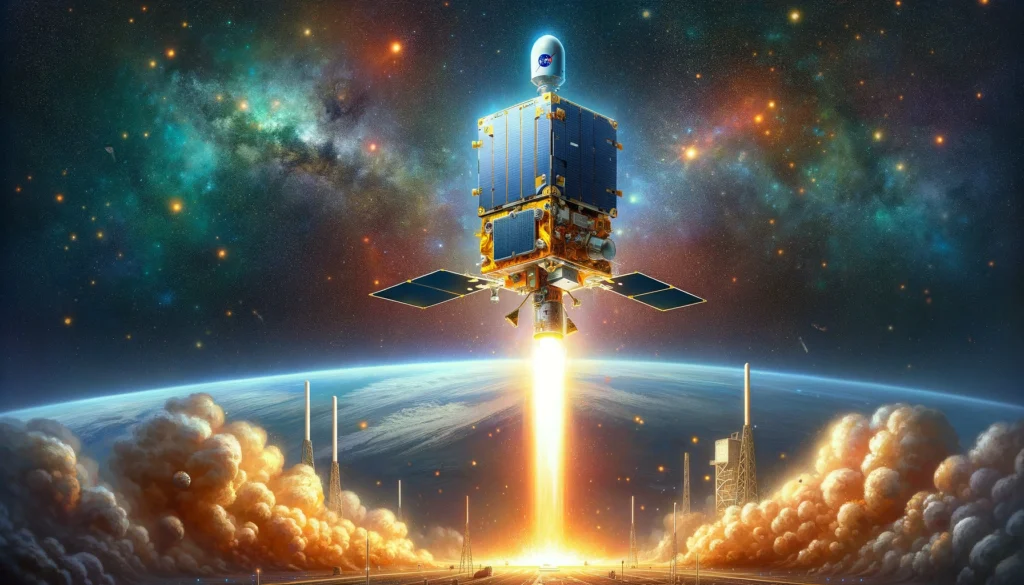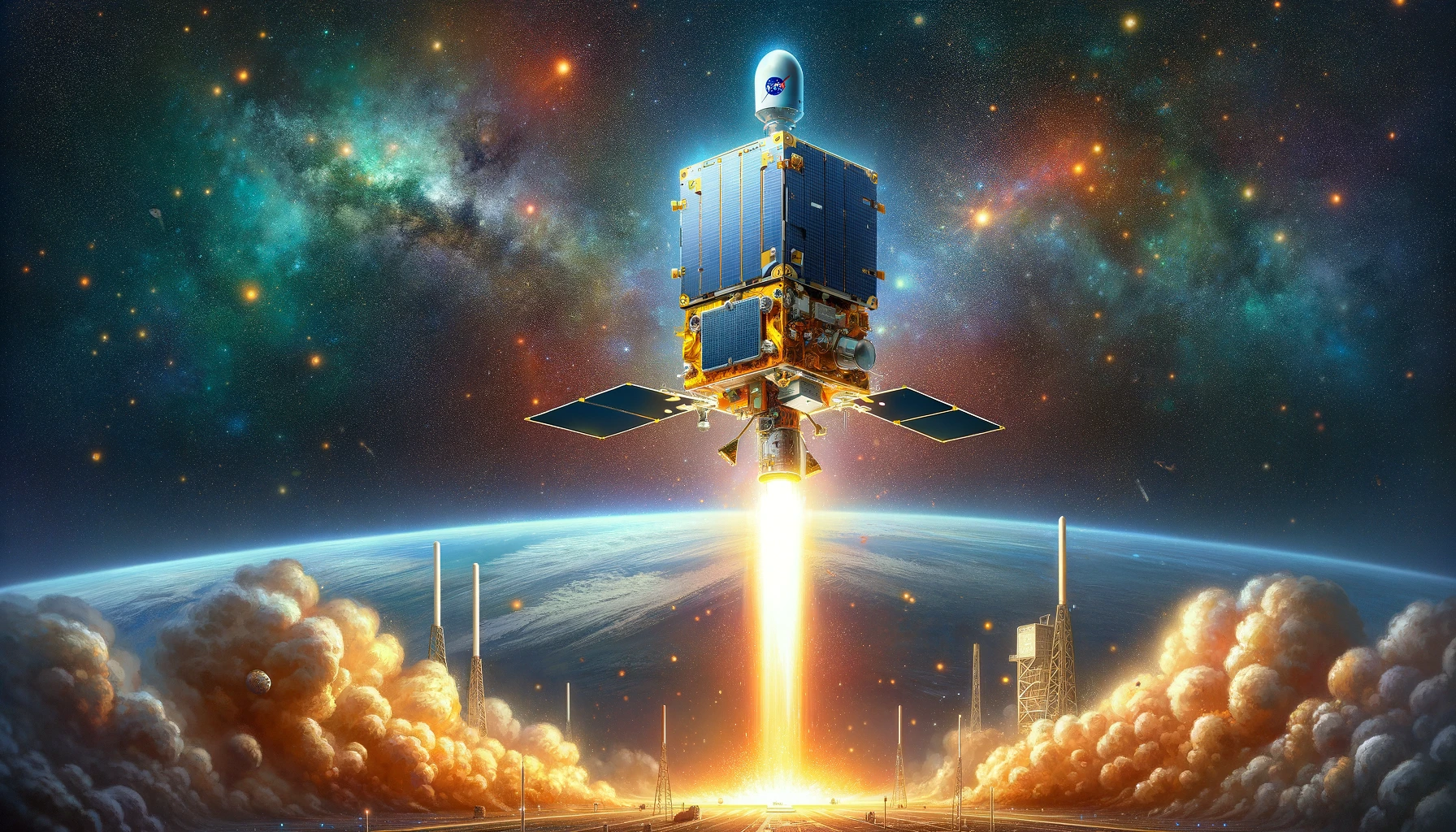NASA’s Tiny BurstCube Mission- In the vast expanse of space, cosmic phenomena continually unfold, offering glimpses into the universe’s most energetic events. One such phenomenon, gamma-ray bursts (GRBs), has intrigued astronomers and astrophysicists for decades. These intense flashes of gamma rays, the most energetic form of light, occur without warning and last from milliseconds to a few hours. To enhance our understanding of these cosmic blasts, NASA has embarked on an ambitious mission named BurstCube. This small satellite, packed with advanced technology, is set to revolutionize our understanding of the universe’s most powerful explosions.

Understanding Gamma-Ray Bursts: The Cosmic Enigma
Gamma-ray bursts are extraordinary events that signify the birth of black holes and the death of massive stars. They release more energy in a few seconds than our Sun will emit over its entire lifetime. Despite their significance, GRBs remain one of the cosmos’ most elusive mysteries. They are detected by satellites in orbit around Earth, which relay the data to ground-based telescopes for further analysis.
The study of GRBs is crucial for several reasons. Firstly, they provide insights into the processes of stellar evolution and the mechanics of black hole formation. Secondly, GRBs can act as cosmic probes, helping scientists study the early universe and the distribution of matter in space. Understanding these bursts also has implications for the field of fundamental physics, allowing researchers to test theories about the nature of the universe and the laws governing it.
BurstCube Mission: A Small Satellite with Big Goals
The BurstCube mission, a brainchild of NASA, is designed to observe and study gamma-ray bursts with unprecedented accuracy. Despite its compact size, BurstCube is equipped with sophisticated instruments capable of detecting and analyzing the high-energy photons that GRBs emit. This small satellite represents a significant advancement in space technology, showcasing how miniaturized satellites can contribute to complex scientific explorations.
BurstCube’s primary instrument is a set of scintillators coupled with photodetectors, which work together to detect gamma rays. When these high-energy rays strike the scintillators, they produce light, which is then converted into electrical signals by the photodetectors. These signals are processed and transmitted back to Earth, where scientists analyze them to understand the properties and mechanisms of the gamma-ray bursts.
The Launch and Journey of BurstCube
The launch of BurstCube marks a significant milestone in space exploration. The satellite was launched aboard a SpaceX Falcon 9 rocket, which delivered it into low Earth orbit. From this strategic vantage point, BurstCube can monitor the entire sky, providing comprehensive coverage and rapid response to GRB events.
Once in orbit, BurstCube began its primary mission: to detect and analyze gamma-ray bursts. Its instruments are designed to operate autonomously, quickly orienting the satellite to capture the fleeting bursts as they occur. The data collected by BurstCube is expected to provide new insights into the nature of GRBs and their sources, contributing to our understanding of the universe’s most energetic phenomena.
Scientific Objectives and Expectations
The BurstCube mission has several scientific objectives. First and foremost, it aims to increase the detection rate of gamma-ray bursts, providing a more complete catalog of these events. By analyzing the frequency, intensity, and distribution of GRBs, scientists can gain deeper insights into their origins and characteristics.
Another critical objective of BurstCube is to study the polarization of gamma rays, which can reveal valuable information about the magnetic fields and environments where these bursts occur. This aspect of the mission will provide clues about the mechanisms that drive these powerful explosions.
Furthermore, BurstCube is expected to play a vital role in multi-messenger astronomy, an emerging field that combines observations of different forms of radiation and cosmic particles. By correlating GRB data with observations of gravitational waves, neutrinos, and other cosmic phenomena, scientists can obtain a more comprehensive picture of the events that produce gamma-ray bursts.
Collaboration and Future Prospects
The success of the BurstCube mission is not just a triumph for NASA but a testament to the power of international collaboration in space exploration. Scientists and researchers from around the world will have access to the data collected by BurstCube, fostering a global effort to unravel the mysteries of the universe.
The launch of BurstCube is just the beginning of a new era in cosmic exploration. As technology advances, future missions will build on the foundations laid by BurstCube, deploying more sophisticated instruments and satellites to probe the depths of space. The quest to understand gamma-ray bursts and their role in the cosmic tapestry will continue, driving innovation and discovery in the field of astrophysics.
In conclusion, NASA’s BurstCube mission represents a significant leap forward in our quest to understand the universe’s most energetic and enigmatic phenomena. With its cutting-edge technology and ambitious scientific goals, BurstCube is poised to shed new light on the mysteries of gamma-ray bursts, opening new frontiers in space exploration and astrophysics.
Read Also-
- NASA Select Terrain Vehicle for Artemis Missions
- NASA and Blue Origin Orbital Reef
- Nasa Comet 12P/Pons-Brooks 2024
- NASA and SpaceX 30th Resupply Mission to ISS










